How To Craft Items In Minecraft
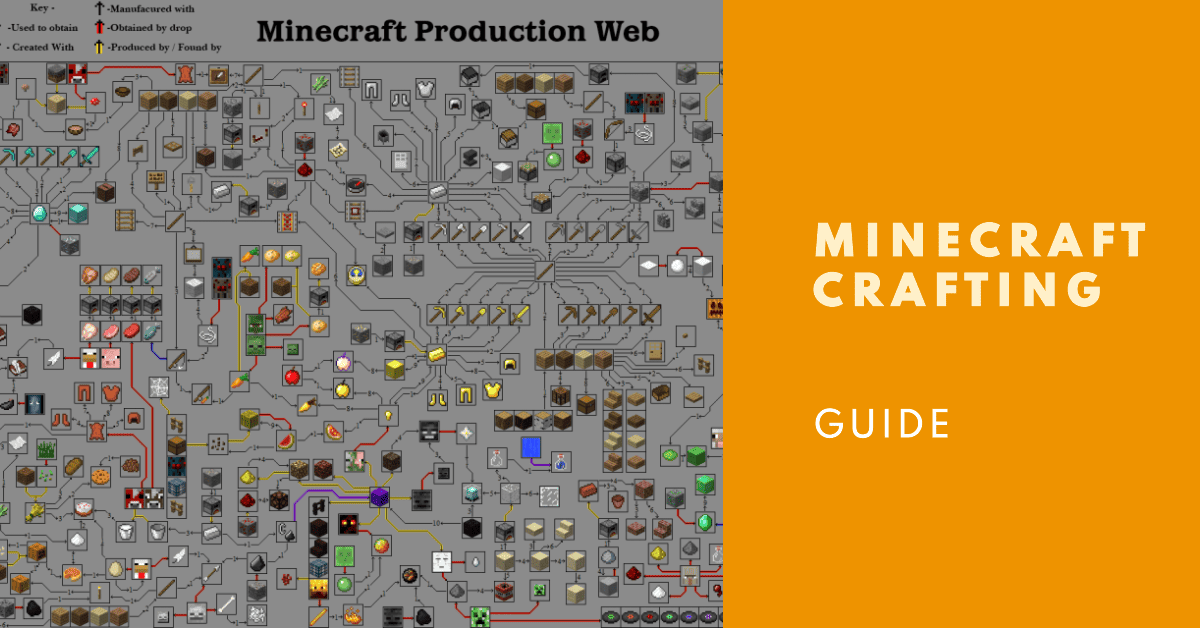
Minecraft Crafting Guide
Minecraft, a game of infinite creativity and survival, provides its players with the opportunity to build virtually anything they can imagine. Central to this is the game's crafting system, which allows you to combine basic materials found throughout the world into a multitude of items, tools, and structures. Let's delve into the process of crafting and the specifics of crafting some of the most essential items.
1. The Crafting Process
Crafting in Minecraft involves arranging materials in the game's 3x3 crafting grid, forming patterns that represent the item you wish to create. Crafting tables are an essential item for this process. Here's how to make a crafting table:
- Crafting Table: 4 Wood Planks (any type)
Crafting tables provide access to the 3x3 crafting grid when right-clicked, enabling a broader range of items to be created. Without it, your inventory crafting grid is just 2x2, which limits the items you can create.
2. Tools Crafting Guide
In Minecraft, tools are essential items that allow you to interact with the world more effectively. From mining resources to fighting off mobs, tools are a player's best friends. This guide will provide a comprehensive overview of crafting some of the most crucial tools in Minecraft.
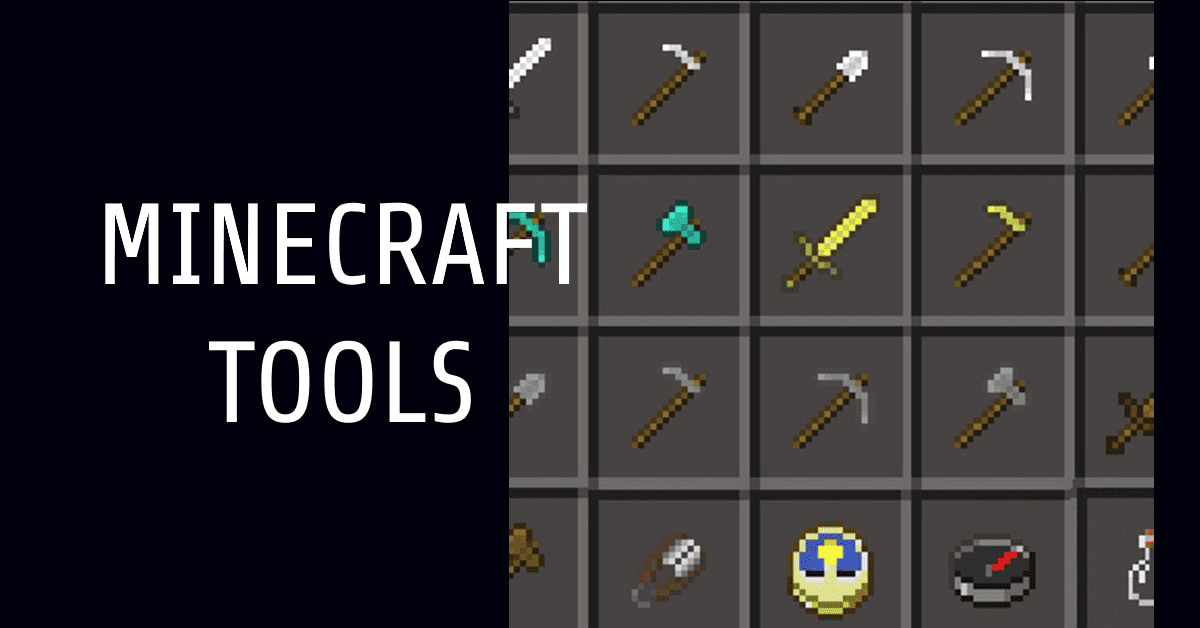
Types of Tools
There are several types of tools in Minecraft, each with a specific purpose:
- Pickaxes: Used to mine stone-type blocks and ores.
- Shovels: Used to dig soil, sand, gravel, and snow faster.
- Axes: Used to chop wood and wooden items more efficiently.
- Hoes: Used to till dirt and grass blocks into farmland for planting crops.
- Swords: Used for combat against mobs.
- Fishing Rods: Used to fish or pull items towards the player.
- Shears: Used to gather wool from sheep or to collect leaves.
- Buckets: Used to carry water, lava, or milk.
- Flint and Steel: Used to start fires or ignite TNT.
Crafting Tools
Crafting tools generally require Sticks and a crafting material such as Wood Planks, Cobblestone, Iron Ingots, Gold Ingots, Diamonds, or Netherite Ingots. The better the crafting material, the higher the tool's efficiency, durability, and damage.
Here are the crafting recipes for the most common tools:
Pickaxes
- Pickaxe: 3 material items (Wooden Planks, Cobblestone, Iron Ingot, Gold Ingot, or Diamond) + 2 Sticks
Shovels
- Shovel: 1 material item + 2 Sticks
Axes
- Axe: 3 material items + 2 Sticks
Hoes
- Hoe: 2 material items + 2 Sticks
Swords
- Sword: 2 material items + 1 Stick
Fishing Rods
- Fishing Rod: 3 Sticks + 2 Strings
Shears
- Shears: 2 Iron Ingots
Buckets
- Bucket: 3 Iron Ingots
Flint and Steel
- Flint and Steel: 1 Iron Ingot + 1 Flint
To upgrade any Diamond tool to a Netherite tool, you will need to use a Smithing Table and combine the diamond tool with a Netherite Ingot.
Tool Durability and Repair
Each tool has a durability that decreases with use. When the durability reaches zero, the tool will break and can no longer be used. However, tools can be repaired by combining two of the same type in a crafting grid, or by using an Anvil and the tool's crafting material.
Tool Enchantments
Tools can be enchanted to provide additional benefits. For instance, the Efficiency enchantment increases the tool's speed, Unbreaking increases durability, and Fortune increases block drops. Enchantments can be applied through an Enchanting Table or an Anvil with an enchanted book.
Remember, the right tools can make your Minecraft experience more efficient and enjoyable. Happy crafting!
Tools are essential in Minecraft. They allow you to gather resources more efficiently, defend yourself against mobs, and engage with the world more fully. The most commonly used tools are Pickaxes, Axes, Shovels, Hoes, and Swords.
- Pickaxes: 3 material items (Wooden Planks, Cobblestone, Iron Ingot, Gold Ingot, or Diamond) + 2 Sticks
- Axes: 3 material items + 2 Sticks
- Shovels: 1 material item + 2 Sticks
- Hoes: 2 material items + 2 Sticks
- Swords: 2 material items + 1 Stick
Each material results in different durability, mining speed, and damage output.
3. Building Blocks Guide
Building is one of the core mechanics of Minecraft, and it offers infinite possibilities to players. Whether you're constructing a simple shelter or crafting a grand castle, you'll need a variety of building blocks. Here's a comprehensive guide on crafting some of the most common building blocks in Minecraft.
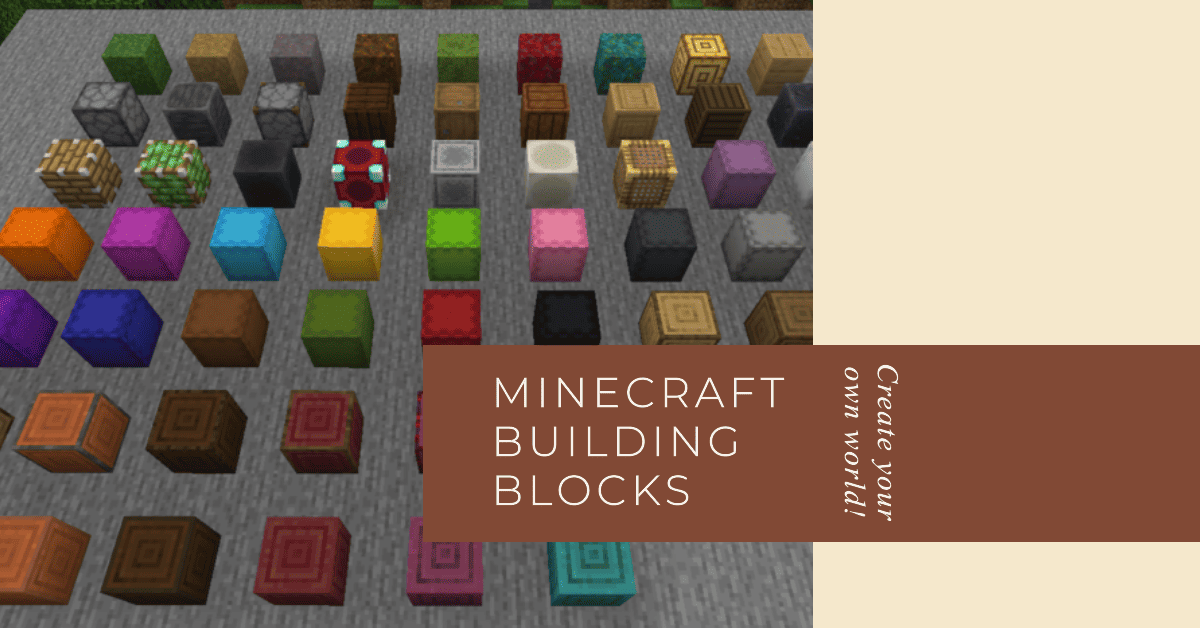
Types of Building Blocks
Minecraft features a wide array of building blocks, each with different aesthetics, strengths, and crafting recipes. Some of the most commonly used include:
- Wooden Planks: Used in many crafting recipes and as a basic building material.
- Cobblestone: Frequently used due to its resistance to explosion and mob spawning.
- Stone Bricks: Strong and fireproof, great for creating a sturdy and stylish structure.
- Bricks: Made from clay, these offer a colorful alternative for building.
- Concrete: Offers a wide range of colors, excellent for decorative builds.
- Glass: Allows light to pass through, great for windows or underwater structures.
Crafting Building Blocks
Here are the crafting recipes for some of the most common building blocks:
Wooden Planks
Wooden Planks can be crafted by simply placing any type of Log in your crafting grid.
- Wooden Planks: 1 Wood Log (any type)
Cobblestone
Cobblestone is obtained when Stone is broken with a pickaxe without the Silk Touch enchantment.
Stone Bricks
Stone Bricks are crafted using Stone, which is obtained by smelting Cobblestone in a furnace.
- Stone Bricks: 4 Stone
Bricks
Bricks are crafted by first mining Clay Blocks, found near or under water, then smelting them in a furnace to create Brick Items. Four Brick Items can then be crafted into a Brick Block.
- Brick Block: 4 Brick Items
Concrete
Concrete requires a mix of Sand, Gravel, and any type of Dye for color.
- Concrete Powder: 4 Sand + 4 Gravel + 1 Dye (any color)
To transform Concrete Powder into a Concrete Block, simply place the powder adjacent to water or drop it into water.
Glass
Glass is crafted by smelting Sand in a furnace.
- Glass: 1 Sand
Other Building Structures
Besides blocks, you can also craft other structural elements like stairs, slabs, and fences. Here are some recipes:
- Stairs: 6 blocks of the same material (Wooden Planks, Cobblestone, Brick, Stone, Sandstone, Quartz, or Nether Brick)
- Slabs: 3 blocks of the same material
- Fence: 4 Wooden Planks + 2 Sticks
Building Tips
- Plan your build: Before you start building, it's helpful to have a plan. Sketch out your ideas or use a Minecraft planning tool.
- Mix materials: Don't be afraid to use a variety of materials to add texture and color to your builds.
- Use lighting: Lighting is a powerful tool for making your structures look great and keeping them safe from mobs.
Remember, the only limit to building in Minecraft is your own imagination. Happy building!
You'll need a variety of building blocks to construct structures.
- Stairs: 6 blocks of the same material (Wooden Planks, Cobblestone, Brick, Stone, Sandstone, Quartz, or Nether Brick)
- Slabs: 3 blocks of the same material
- Fence: 4 Wooden Planks + 2 Sticks
4. Crafting Minecraft Armor
Minecraft armor is vital for survival, providing a player with protection against attacks from hostile mobs, falls, and other types of damage. There are several different types of armor available, each providing a different level of protection. Here's a comprehensive guide to crafting each type of armor in Minecraft.
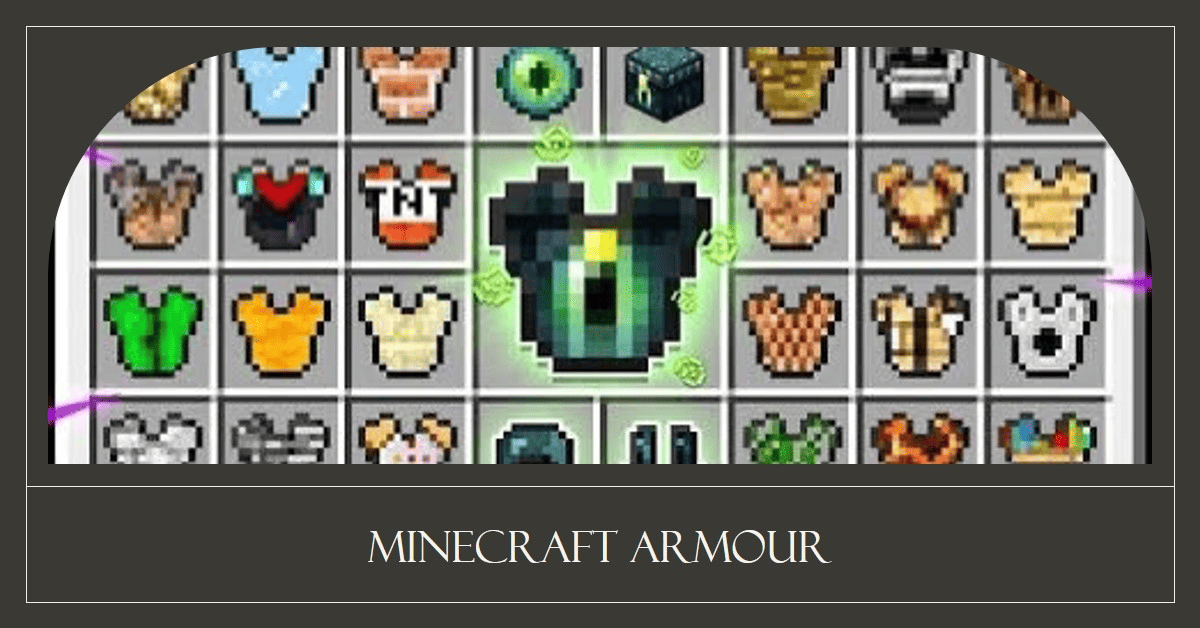
Types of Armor
Minecraft has four main types of armor, which are made from different materials and provide varying levels of protection. These include:
- Leather Armor: Provides the least protection, but is easily obtainable early in the game.
- Iron Armor: Provides moderate protection and is relatively easy to acquire.
- Diamond Armor: Offers high protection but requires rare diamond resources.
- Netherite Armor: Offers the highest level of protection and has higher durability, but requires rare Netherite Ingots.
Crafting Armor
Crafting armor in Minecraft requires a Crafting Table and the necessary materials. Armor is crafted in five pieces: a helmet, chestplate, leggings, boots, and a shield.
Crafting Table
To make a crafting table:
- Crafting Table: 4 Wood Planks (any type)
Leather Armor
Leather armor is the easiest to craft, as it only requires Leather, which can be obtained by killing cows, horses, llamas, or hoglins.
- Leather Helmet: 5 Leather
- Leather Chestplate: 8 Leather
- Leather Leggings: 7 Leather
- Leather Boots: 4 Leather
Iron Armor
Iron armor requires Iron Ingots, which can be obtained by mining Iron Ore and smelting it in a furnace.
- Iron Helmet: 5 Iron Ingots
- Iron Chestplate: 8 Iron Ingots
- Iron Leggings: 7 Iron Ingots
- Iron Boots: 4 Iron Ingots
Diamond Armor
Diamond armor provides high protection but requires diamonds, which are found deep underground in the Overworld.
- Diamond Helmet: 5 Diamonds
- Diamond Chestplate: 8 Diamonds
- Diamond Leggings: 7 Diamonds
- Diamond Boots: 4 Diamonds
Netherite Armor
Netherite Armor provides the highest level of protection but requires Netherite Ingots, which are obtained by combining 4 Gold Ingots and 4 Netherite Scrap in a Crafting Table.
- Netherite Helmet: Upgrade a Diamond Helmet with 1 Netherite Ingot
- Netherite Chestplate: Upgrade a Diamond Chestplate with 1 Netherite Ingot
- Netherite Leggings: Upgrade a Diamond Leggings with 1 Netherite Ingot
- Netherite Boots: Upgrade a Diamond Boots with 1 Netherite Ingot
To upgrade, use a Smithing Table and combine the diamond armor piece with a Netherite Ingot.
Shield
A shield can be used for defense in Minecraft, providing excellent protection against attacks.
- Shield: 1 Iron Ingot + 6 Wood Planks
Durability and Repair
Armor has a durability that decreases with use. When the durability of a piece of armor reaches zero, it breaks and no longer provides any protection. Armor can be repaired using an Anvil and the material it is made from, or by combining two damaged pieces of the same type of armor.
Remember, wearing a full set of any type of armor will also give you bonus armor toughness, which helps to reduce incoming damage.
The process of crafting and wearing armor is an essential aspect of gameplay in Minecraft, providing crucial protection that can help you survive in the game's vast and often hostile world. Practice crafting and using armor, and you'll find your survival chances greatly increased!
5. Crafting Utilities
Utilities are essential items in Minecraft that serve a range of functions, from cooking and smelting to storage and transportation. Understanding how to craft and use these items can greatly enhance your gameplay experience. This guide will provide a comprehensive overview of crafting some of the most crucial utility items in Minecraft.
Types of Utilities
There are several types of utility items in Minecraft, each with a specific purpose:
- Furnaces: Used to smelt ores into ingots, cook food, and more.
- Chests: Used for storage of items and blocks.
- Crafting Tables: Allows you to craft a wider range of items.
- Beds: Used to skip to dawn and set your spawn point.
- Torches: Provides light and prevents hostile mobs from spawning.
- Anvils: Used to repair and enchant items.
- Enchanting Tables: Used to enchant tools, weapons, and armor.
- Brewing Stands: Used to brew potions.
Crafting Utilities
Here are the crafting recipes for the most common utility items:
Furnaces
- Furnace: 8 Cobblestone
Chests
- Chest: 8 Wooden Planks
Crafting Tables
- Crafting Table: 4 Wooden Planks
Beds
- Bed: 3 Wool (any color) + 3 Wooden Planks
Torches
- Torch: 1 Stick + 1 Coal or Charcoal
Anvils
- Anvil: 3 Iron Blocks + 4 Iron Ingots
Enchanting Tables
- Enchanting Table: 4 Obsidian + 2 Diamonds + 1 Book
Brewing Stands
- Brewing Stand: 1 Blaze Rod + 3 Cobblestone
Utility Usage
- Furnaces can be fueled by various items, including Coal, Charcoal, Wood Blocks, and more. Simply place the item you wish to smelt or cook in the top slot, and the fuel in the bottom slot.
- Chests can be opened by right-clicking and provide storage for up to 27 stacks of items or blocks.
- Crafting Tables give access to a 3x3 crafting grid when right-clicked, enabling a wider range of crafting recipes.
- Beds can be used to skip the night and set your respawn point. Be aware that in multiplayer, all players must be in beds at the same time to skip the night.
- Torches can be placed on most solid blocks to provide light.
- Anvils allow you to repair tools, combine enchantments, and rename items.
- Enchanting Tables require Lapis Lazuli to enchant items, and the strength of the enchantments can be boosted by placing Bookshelves around the table.
- Brewing Stands require Blaze Powder for power, and can hold up to three potions at a time for brewing.
Utility items are fundamental for an efficient and enhanced gameplay experience in Minecraft. Knowing how to craft and use these items will greatly aid your adventures. Happy crafting!
6. Food Items Guide
Food is a critical component in Minecraft. Not only does it replenish your hunger bar, but it can also overfill your hunger into a 'saturation' bar, allowing you to heal and sprint longer. This guide will provide a comprehensive overview of crafting some of the most beneficial food items in Minecraft.
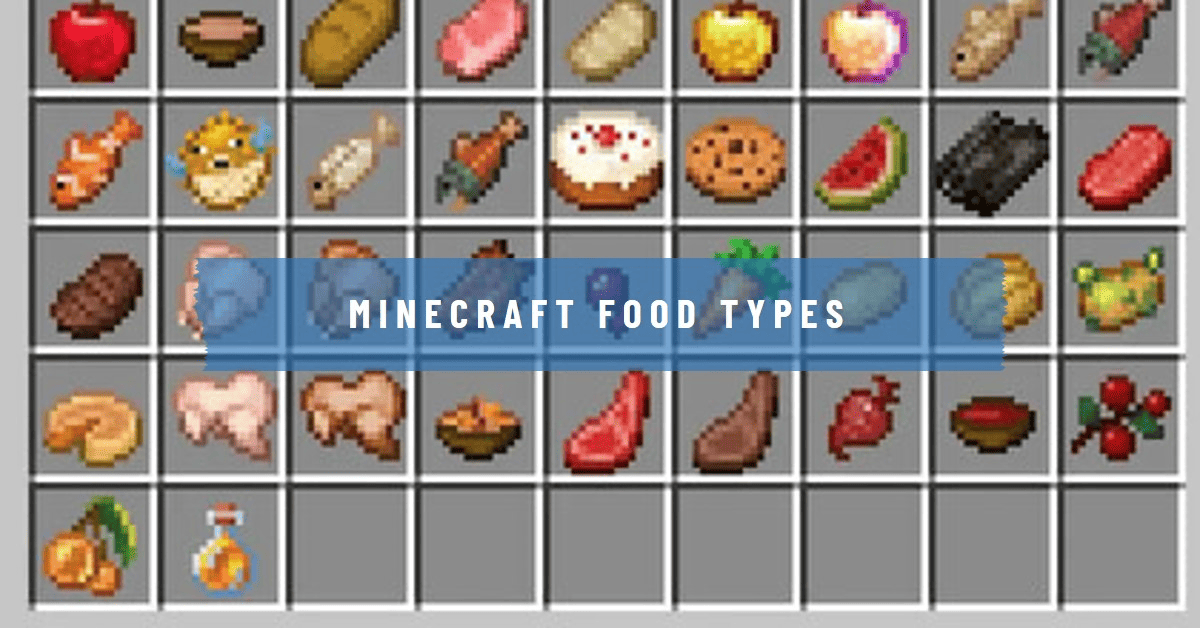
Types of Craftable Food Items
There are several types of food items you can craft in Minecraft, each with a different amount of hunger points restored:
- Bread: Simple and easy to make, restoring 5 hunger points.
- Cake: Can be placed and eaten in slices, restoring 2 hunger points per slice.
- Golden Apple: Offers additional effects like regeneration and absorption, restoring 4 hunger points.
- Cookie: Crafted in batches, each restoring 2 hunger points.
- Mushroom Stew: Requires both types of mushrooms, restoring 6 hunger points.
- Pumpkin Pie: A hearty dessert, restoring 8 hunger points.
Crafting Food Items
Here are the crafting recipes for the most common food items:
Bread
- Bread: 3 Wheat
Cake
- Cake: 3 Milk Buckets + 2 Sugars + 1 Egg + 3 Wheat
Golden Apple
- Golden Apple: 1 Apple + 8 Gold Ingots
Cookie
- Cookie: 2 Wheat + 1 Cocoa Beans
Mushroom Stew
- Mushroom Stew: 1 Red Mushroom + 1 Brown Mushroom + 1 Bowl
Pumpkin Pie
- Pumpkin Pie: 1 Pumpkin + 1 Sugar + 1 Egg
Food Consumption and Effects
To eat food, hold the Use Item/Place Block button while holding a food item. Some foods have special effects:
- Eating a Golden Apple gives you the Absorption effect (adds 2-4 extra hearts for 2 minutes) and the Regeneration effect (restores health over time for 5 seconds).
- A Cake can be placed in the world and eaten slice by slice. Each slice eaten restores 2 hunger points.
- Mushroom Stew cannot be stacked in your inventory, but it is a decent source of food early in the game as mushrooms are relatively common.
Farming Ingredients
Many ingredients used in crafting food items can be farmed. Wheat, Sugar Cane, Pumpkins, and Cocoa Beans can all be grown to create a sustainable food source.
Remember, having a good food source is crucial for survival in Minecraft. It keeps your hunger bar filled, allowing you to regenerate health and sprint when necessary. Happy crafting, and enjoy your meal!
Summary
crafting is an integral component of the Minecraft experience that fuels creativity, survival, and exploration in the game's diverse world. Whether it's the creation of basic tools for resource gathering, the assembly of protective armor for combat situations, the construction of various building blocks for grand structures, or the preparation of food items for health and hunger management, crafting enables players to interact, adapt, and thrive in the Minecraft universe. Crafting's inherent flexibility and depth significantly contribute to the game's enduring appeal, allowing players to continually discover new and innovative ways to engage with their environment.
The vast range of craftable items, from basic utilities to complex mechanisms, underscores Minecraft's core premise: the power of player creativity. Utilities like furnaces, chests, and crafting tables shape the gameplay, influencing everything from storage solutions to cooking and complex crafting. Food items ensure survival and health regeneration, while armor provides necessary protection. The array of building blocks paves the way for monumental architectural feats, and tools facilitate essential resource gathering. In essence, the Minecraft crafting system mirrors the limitless potential of the game itself, proving that with the right materials and knowledge, players can build a world beyond imagination. You can get Minecraft hosting here.



